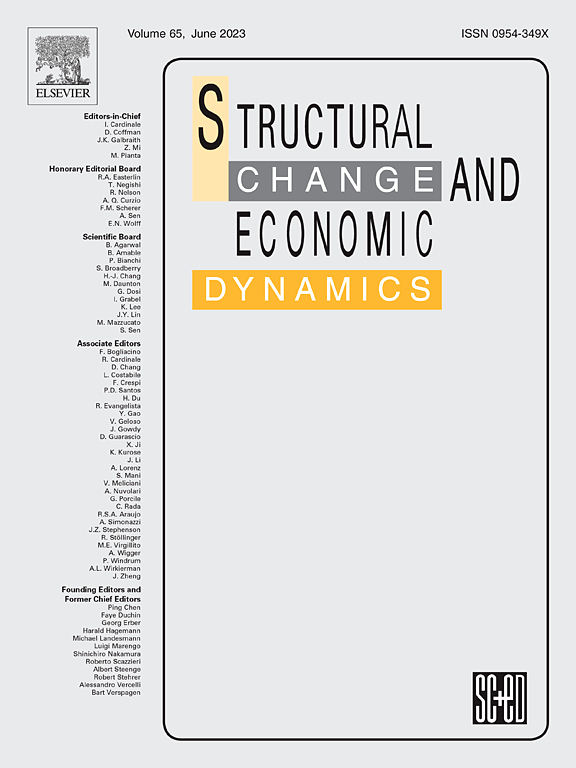资源依赖型经济体出口多样化的决定因素:产品相关性和宏观经济条件的作用
IF 5.5
2区 经济学
Q1 ECONOMICS
引用次数: 0
摘要
出口多样化对经济发展至关重要,但许多资源丰富的国家在扩大其采掘产品以外的出口结构方面一直难以取得重大进展。虽然缺乏能力经常被强调为多样化的主要障碍,但文献经常低估宏观经济条件对出口多样化潜力的重大影响。这项研究旨在弥合能力文献与宏观经济因素之间的差距,特别是在严重依赖采掘业的经济体中。为了解决我们的问题,我们首先引入了一种新的产品相关性度量方法,扩展了Nomaler和Verspagen(2022)开发的框架,并从计量经济学上估计了其与关键宏观经济变量(如国际价格、汇率、能源和矿物依赖以及人均GDP)的关系。该分析涵盖了1995年至2019年多个国家的5000多种产品,目的是确定这些因素在预测多样化模式方面的相对重要性,并评估宏观经济条件如何促进或阻碍多样化,特别是在非采掘部门。我们的研究结果表明,虽然产品相关性是多样化的一个强有力的预测指标,特别是在路径依赖非常明显的采掘业,但宏观经济因素起着更决定性的作用。这些因素不仅决定了多元化的可行性,而且塑造了产业扩张和发展的条件。根据其动态,宏观经济变量可以加强现有的专门化模式或为多样化创造新的机会。本文章由计算机程序翻译,如有差异,请以英文原文为准。
Determinants of export diversification in resource-dependent economies: The role of product relatedness and macroeconomic conditions
Export diversification is crucial for economic development, yet many resource-rich countries have struggled to achieve significant progress in expanding their export structure beyond extractive products. While the lack of capabilities is often highlighted as a primary barrier to diversification, the literature frequently underestimates the significant impact of macroeconomic conditions on export diversification potential. This study seeks to bridge the gap between the capabilities literature and macroeconomic factors, particularly in economies heavily dependent on extractive industries. In order to address our question, we initially introduce a novel measure of product relatedness, expanding on the framework developed by Nomaler and Verspagen (2022), and econometrically estimate its relationship with key macroeconomic variables such as international prices, exchange rates, energy and mineral dependency, and GDP per capita. The analysis spans over 5000 products across multiple countries from 1995 to 2019, with the objective of determining the relative significance of these factors in predicting diversification patterns and assessing how macroeconomic conditions either facilitate or impede diversification, particularly in non-extractive sectors. Our results indicate that while product relatedness is a strong predictor of diversification, particularly in extractive industries where path dependence is highly pronounced, macroeconomic factors play an even more decisive role. These factors not only determine the feasibility of diversification but also shape the conditions under which industries expand and evolve. Depending on their dynamics, macroeconomic variables can either reinforce existing patterns of specialisation or create new opportunities for diversification.
求助全文
通过发布文献求助,成功后即可免费获取论文全文。
去求助
来源期刊

Structural Change and Economic Dynamics
ECONOMICS-
CiteScore
9.60
自引率
4.90%
发文量
159
期刊介绍:
Structural Change and Economic Dynamics publishes articles about theoretical, applied and methodological aspects of structural change in economic systems. The journal publishes work analysing dynamics and structural breaks in economic, technological, behavioural and institutional patterns.
 求助内容:
求助内容: 应助结果提醒方式:
应助结果提醒方式:


